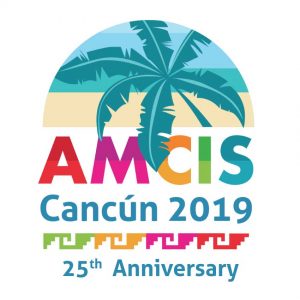The Internet is a powerful means for people to share information freely and reliably. This is possible due to the Internet’s technological infrastructure, governance principles, global reach, and Web 2.0 features that enable on-the-scene, real-time, user-generated content. However, governments around the world have been censoring online content or building their own regional Internet infrastructure in order to manipulate information, create particular visions of the information world, and ultimately dominate their people (Naím & Bennett 2015). Governments may also reframe available online information into useful information for their intents.
While governments challenge the world of free information in a systematic fashion and with long-term intents, certain individuals also act alone or in groups to manipulate information with short-term goals based on incidental motivations and convenient opportunities. Interestingly, such opportunities emerge in regions where governments do not censor the flow of information in cyberspace, that is, where information democracy is the norm. In such places, certain individuals may want to cause instant damage to other individuals or institutions, and they find opportunities in distributing false information to a large audience given the Internet’s reach. Perpetrators engage in information frauds even though oftentimes such frauds can be detected with a mere inspection of other relevant sources also available on the Internet. This is the case in a large number of situations, such as when individuals distort a politician’s image, a country’s economic or social indicators, or a company’s effectiveness in customer service. Life expectancy of certain false online information is short, but such falsehoods can exert immediate damage to their targets – and there is virtually no penalty for such crimes since legislations regulating the spread of false information on the Internet is largely missing in the democratic world and across countries.
Though the Internet is commonly recognized as the best tool to promote quality information inasmuch as quality can be asserted by accuracy, completeness, timeliness and source transparency, in fact it has been used also to spread false information. False information/rumors are extremely powerful to ignite the emergence of an anti-information/anti-intellectual society. Particularly dangerous in cyberspace is the use of evidence-based data to craft false arguments, usually by resorting to incomplete data and ingenious views on correlations; malicious use of factual data has been creatively termed “weapons of math destruction” (O’Neil 2016). In other words, factual data may be used to create false information and narratives that linger as well as sow discord in the human mind. The information revolution now needs to survive the information wars and restore credibility before a modern version of the Roman catacombs – such as the Deep Web – is needed for people to share and consume real, useful information safely and accurately.
In this scenario, information processing has become increasingly cognitively demanding as we are confronted with information of mixed quality. We approach information of unknown quality, and it approaches us in everyday contexts especially through our mobile devices and services such as social media. The processing of information stems from the fundamental need to connect and be part of the world around us (Maslow 1971). However, in addition to the aforementioned deliberate ill-uses of information by third parties, information overload is also a serious threat to our capacity to process information and make good decisions based on it (Eppler & Mengis 2004). As a consequence, also at risk is our expectation of being effective in the digital society – i.e., of making use of technology-mediated information vis-à-vis a purpose and in a systemically healthy way (Bellini 2018).
Accordingly, as recent events throughout the world have shown, social media platforms are effective means to promote false narratives that amplify bias and try to influence public opinion. There are 3.2 billion social media users in a population of 7.6 billion individuals, of which 2.7 billion are active through their mobile devices (Kemp 2018). Given the spread of information of mixed quality and the fact that bounded rationality (Simon 1979) is a permanent limitation for us to deal with information overload, the situation is ripe for opportunists to spread false information – aka fake news – in multiple online platforms. The ability of an individual, a group or state agents to use platforms like social media to spread false information has indeed amplified, as evidenced recently in political campaigning and elections (Allcott & Gentzkow 2017; Marchi 2012). As research by Lazer et al. (2018) points out, the global society needs new safeguarding standards and novel frameworks to approach this problem.
Our purpose in this track is to provide a forum for such safeguards. We encourage papers that address the broad area of information spread and technology use, and their effects in biasing personal and/or political decision-making. This track specifically encourages submissions of research exploring innovative ways to identify the mechanisms and causes of spreading false information and ways to deal with these mechanisms in the context of rhetoric, design, and social media. We invite submissions that elaborate causes and impacts of false information such as conceptual and theoretical developments, empirical research findings, case studies, research in progress, methodology papers, and other high-quality contributions. Submissions detailing research on measures (either theoretical measures or behavioral interventions, or the design of novel artifacts) to prevent the spread of false information are also welcome.
Subscribe to RSS Feed (Opens in New Window)
|
Rhetoric Mining for Fake News: Identifying Moves of Persuasion and Disinformation Michelle MH Seref, Virginia Tech |
|
|
Towards Understanding Malicious Actions on Twitter Agnieszka Onuchowska, University of South Florida |


